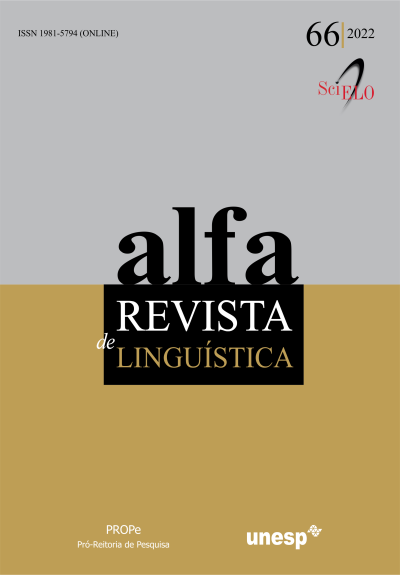Tongue movement in consonant cluster reduction in brazilian children with phonological disorder
duration and tongue displacement measures
DOI:
https://doi.org/10.1590/1981-5794-e13296Keywords:
articulatory analysis, language acquisition, phonological acquisition, brazilian portugueseAbstract
This study characterized tongue displacement and duration measures in phonological disorder and typical children´s productions of Brazilian Portuguese speakers. The hypotheses are: (1) children with phonological disorder are characterized by longer duration than typical children; and (2) tongue displacement is greater in phonological disorder and typical children´s productions. Participants were five children diagnosed with phonological disorders (PD) and five typically developed (TD). The corpus consisted of three repetitions with two syllable patterns: CCV and CV. The images were captured simultaneously by the Articulate Assistant Advanced software. The hypothesis 1 was not confirmed and hypothesis 2 was partially confirmed. The durational measures demonstrated that the CCV syllables were significantly longer than the CV syllables in TD. The posterior and average tongue displacement is greater in phonological disorder. The children with phonological disorders do not seem to coordinate gestures of the tongue tip and dorsum during CCV production separately (expected for the production of tap), however they displaced the average and posterior region of the tongue.
Downloads
Downloads
Published
How to Cite
Issue
Section
License
Manuscripts accepted for publication and published are property of Alfa: Revista de Linguística. It is forbidden the full or partial submission of the manuscript to any other journal. Authors are solely responsible for the article's content. Translation into another language without written permission from the Editor advised by the Editorial Board is prohibited.

